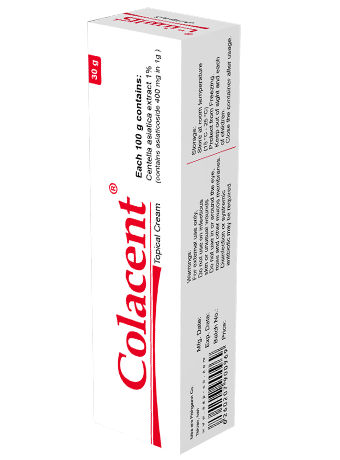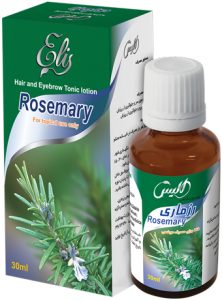Colacent
Treatment of wounds, burns, and ulcerous skin ailments, and prevention of hypertrophic scars, to treat second- and third-degree burns. To accelerate healing, particularly in cases of postsurgical and post-trauma wounds. hypertrophic scarring, psoriasis.
Include Centella Asiatica 1%, Wound healing, Scar and keloid prevention
Usages
Wound and burn healing
Scar Management
Mechanism
The pharmacological activity of Centella asiatica is thought to be due to several saponin constituents, including asiaticoside, asiatic acid, and madecassic acid. Extracts of C. asiatica, and in particular its major triterpene ester glycoside, asiaticoside, are valuable in the treatment of hypertrophic scars and keloids. Asiaticoside has been reported to decrease fibrosis in wounds, thus preventing new scar formation. The mechanism of action appears to be twofold: by increasing the synthesis of collagen and acidic mucopolysaccharides, and by inhibiting the inflammatory phase of hypertrophic scars and keloids. It has further been proposed that asiaticoside interferes with scar formation by increasing the activity of myofibroblasts and immature collagen. Triterpene compounds stimulate connective tissue repair and asiaticoside derivatives protect neurons from beta-amyloid toxicity
Pharmacokinetics
Madecassic acid crosses the skin rapidly but only to a limited extent. The plasma concentration did not exceed 0.02 to 0.05% of the initial applied concentration. Madecassoside is at the skin application site only 0.04% of the applied dose at 1 hour and about 0.06% after 24 hours. For asiatic acid similar results were observed. In man, active ingredients of Centella asiatica are excreted principally by faeces in a 24-76 hour period; smaller quantities are eliminated through the kidneys (EMEA 1998).
Contraindications
Infectied wounds, Allergy to plants of the Apiaceae family.
Warnings and Precautions
Pure triterpenoids of Centella asiatica have been reported to cause alteration in gene expression in human fibroblasts. Repeated topical application of an asiaticoside mixture has been associated with a tumour-growth-promoting effect in mice. A recent study suggests that the leaf extract per se does not have a genotoxic potential. The sensitizing effect of the triterpene fraction could be the potential cause of allergic contact dermatitis.
Adverse reactions
Allergic contact dermatitis has been associated with topical application of C. asiatica. However, further testing revealed that these reactions may be due to other ingredients in the preparations, Burning.
Drug interactions
No drug interactions have been reported. Caution should be advised in patients who are already taking substances having sedative properties with the aim to avoid additive effect.
Use in pregnancy and lactation
Not be used during pregnancy without medical advice.
Dosage and Administration:
To aid in the local treatment for granulation phase of wounds, cutaneous ulcers and cutaneous gangrene: 2 times daily
For the treatment of moderate or benign problems in wound formation such as atonic wounds: To be applied after disinfection, upon changing of the wound dressing.
For hypertrophic scars/keloids in active phase: apply directly on the wounds. The use is based on clinical experience.
Storage
Keep out of sight and reach of children. Protect from light and moisture. Keep between 15 – 30 °C. Protect from freezing. Package in well-closed, light-resistant containers.



